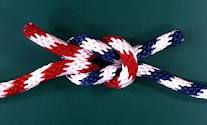 Over the past few video blogs we’ve looked at how to coach behaviors and performance; and we looked at how to do that using the G.R.O.W. coaching model. Here are some key summary points for getting this to work for you.
Over the past few video blogs we’ve looked at how to coach behaviors and performance; and we looked at how to do that using the G.R.O.W. coaching model. Here are some key summary points for getting this to work for you.
Accentuate the positive: Remember to praise what they did well before suggesting improvements. If you lower their walls of defense first they’ll be much more receptive to those improvements.
Focus on behaviors, not on the person: Avoid any phrases that will put the person you’re coaching on the defensive. Instead of “Sarah, I think you’re an ineffective customer-support specialist,” try “Sarah, I think there are some things we can do to improve the quality of your customer engagements.”
Push back on any inflated self assessment: If they rate themselves a 9 or a 10 on a scale of 1-10, but they’re really more like a 3, let them know you disagree, and be ready to cite specific gaps between their performance and the performance you expect of them.
Practice persistence and patience: Development is not something that happens overnight. It takes regular and frequent coaching sessions before you can expect improvements to become second nature.
Transfer ownership for improvements to them: This means less talking on your part, more talking on theirs. Focus on open-ended questions, like, “what do you think needs to happen to take this to the next level?” Get their input and write out their responses. Then re-state their responses back to them in the form of a plan of action.
Set specific expectations for improvements and get a commitment: Be assertive, be clear, be specific, and above all get their commitment to turn their suggestions for improvement into their actual practice.
Download the G.R.O.W. Worksheet
Well there you have it; the GROW coaching process and some general guidelines for making it work well. That’s all the time we have for this edition of the Support EDGE. Until next time, be sure all your development initiatives are performance-drive and outcomes-based.
~ES









